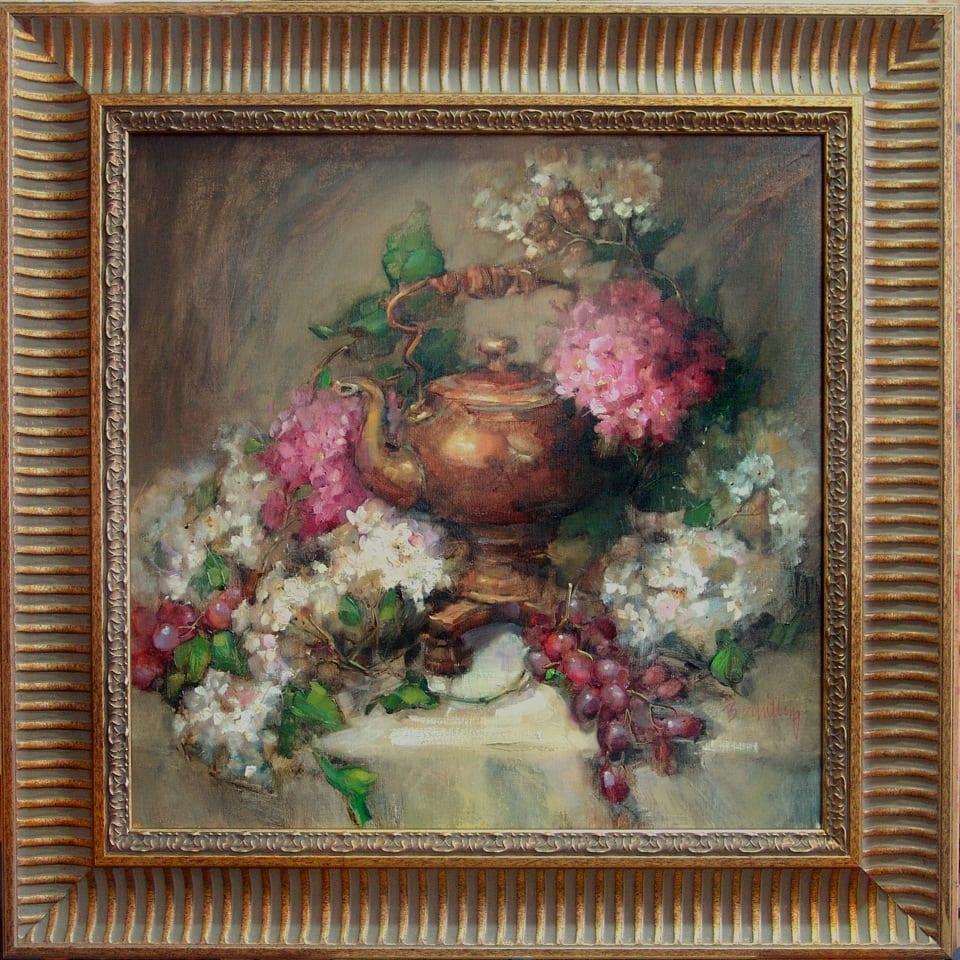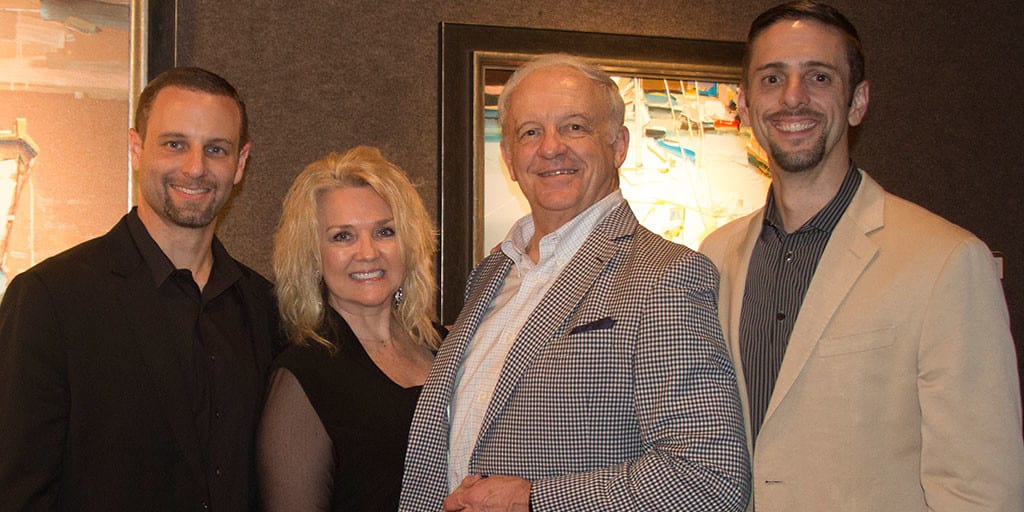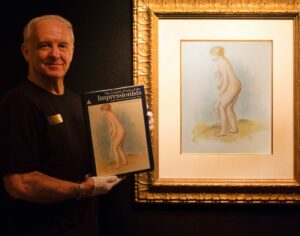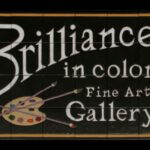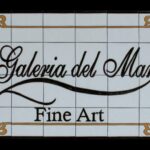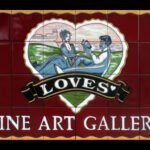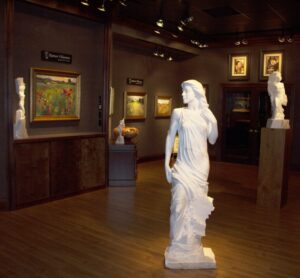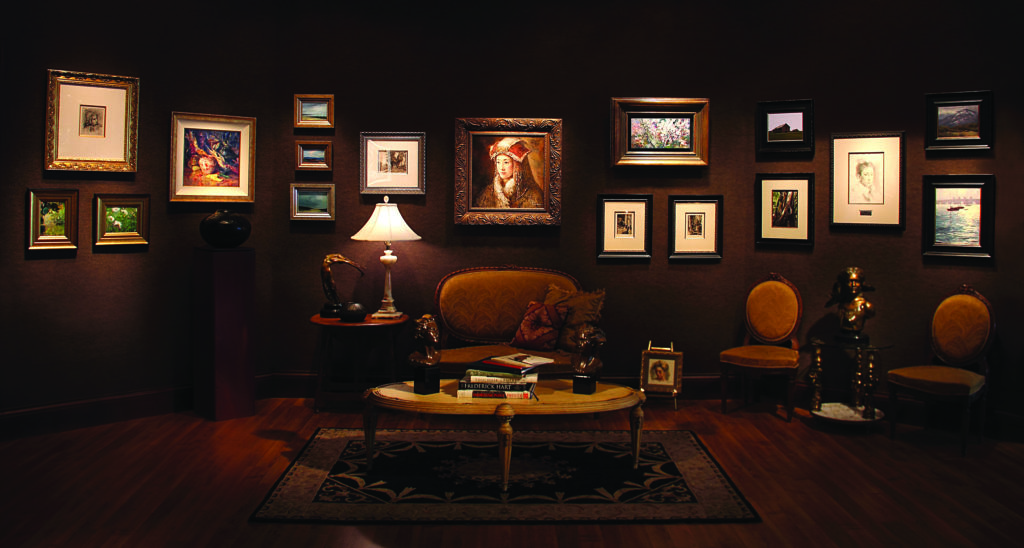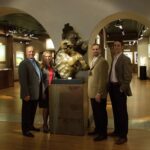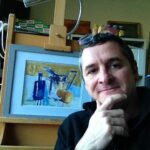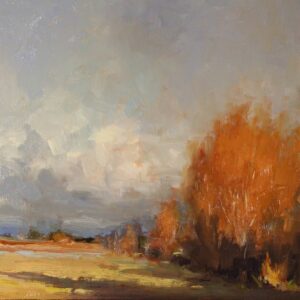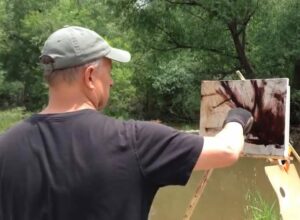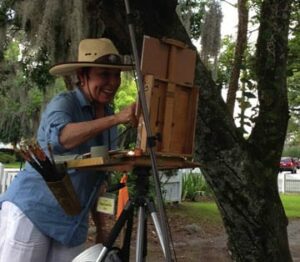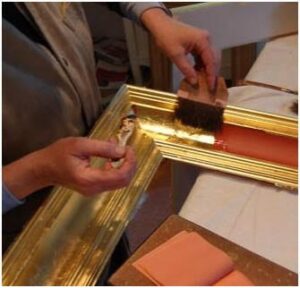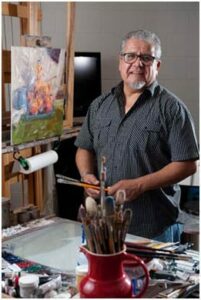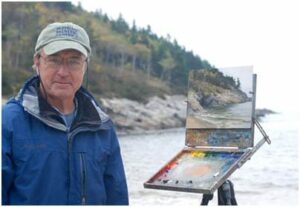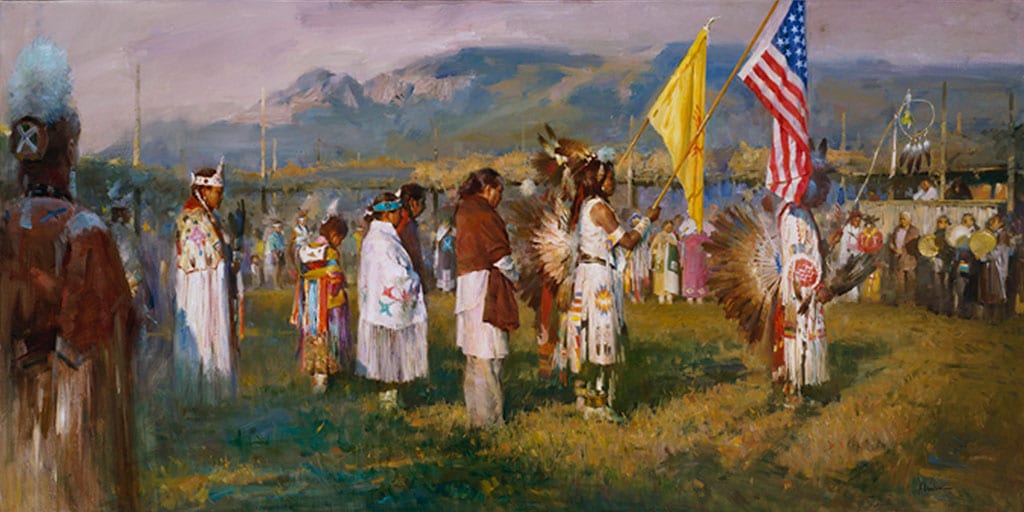 I’ve had some requests to post some of my processes so I am going to do a step-by-step of this painting. The teakettle is an antique given to me by an old friend…I wish I knew the story of it, I’ve never seen another one like it. I hope you enjoy the information on my technique(s)!
I’ve had some requests to post some of my processes so I am going to do a step-by-step of this painting. The teakettle is an antique given to me by an old friend…I wish I knew the story of it, I’ve never seen another one like it. I hope you enjoy the information on my technique(s)!
No two paintings are ever approached or completed in exactly the same way. I think it is very important to allow the energy to flow naturally and sometimes that may take a course during a painting that you didn’t originally plan. I think that is not only ok..I think that is necessary if your painting is going to find life. While the “rules” to painting are absolutely necessary to learning how to create a pleasant and believable work of art, it is with practice that you can learn to bend and remake some of those rules. That is when an artist truly begins to find their own voice. That is an evolution that must take place or the artist is simply mimicking that which has already been said.
There are as many visions for a painting as there are artists to paint it. The following process is simply my vision.
Let me begin with my palette. The colors I choose are very important for the technique I use. I love the combination of transparent and opaque and there are two things you must have to get that effect:
- Oil primed linen (I use Centurion oil primed. I stretch my own canvases so I purchase it by the roll. It is also available prestretched. I find that Jerry’s Artarama has some reasonable prices)
- Transparent Pigments. I have certain colors and certain brands that I cannot paint without.
Most of my colors are Rembrandt unless otherwise specified (The brand is important because colors and transparency can vary a lot from one to another)
Rembrandt transparent pigments;
- transparent oxide red
- transparent oxide yellow
- transparent yellow light
- olive green
- transparent oxide brown
other “must have” transparent colors that I do not have a preferred brand:
- alizarin crimson permanent (make sure you are getting one that is permanent, the older alizarin crimsons would fade with time)
- ultramarine blue
- quinacridone rose
- viridian green
These are my initial layout and block-in colors. I do not use any opaque pigments at this point.
I do not use all these colors for every painting it depends on the color harmony or local color of the objects for each painting.
Opaque pigments;
- Titanium white (I prefer Rembrandt, but use others too) Any time you add white to a color it starts becoming more opaque…the more white the more opaque.
- cadmium lemon yellow
- cadmium yellow medium
- cadmium red light
- yellow ochre
- cobalt blue
- dioxazine purple (sometimes)
- burnt sienna
Mineral spirits is my primary brush rinse and thinner although I may use some liquin as I progress to the final stages of the painting.
I like to keep my brushes sharp (chisel edged). I use almost all Silver Bristlon Brights or angled (these are a little harder to find) I like a semi-stiff bristle. If I want to “scrub out” a larger area I will use a natural bristle bright as they are stiffer and tend to be more durable for that rough treatment.
It is hard to keep brushes sharp for long and I do replace them every couple of months.
I learned a technique from Daniel Keys for putting a folded cardstock over the tip and securing with a bulldog clip. It does help but you have to do it carefully or you can really mess up the bristles!
Ok..lets start painting!!






My opaque areas are also where I usually apply my thickest paint. sometimes putting it on so thickly that I can almost sculpt with it to create form. I only do this where I want the most important parts of my painting to be. The point of interest.




